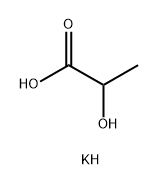Potassium canrenoate
- CAS NO.:2181-04-6
- Empirical Formula: C11H15KO2
- Molecular Weight: 218.33
- MDL number: MFCD00058500
- EINECS: 218-554-9
- SAFETY DATA SHEET (SDS)
- Update Date: 2024-11-17 16:00:36

What is Potassium canrenoate?
Originator
Spiroctan,Boehringer Mannheim,Switz.,1968
The Uses of Potassium canrenoate
anticholithogenic, antilipemic agent
The Uses of Potassium canrenoate
Canrenoic acid is an aldosterone antagonist. Canrenoic acid is used as an diuretic.
What are the applications of Application
Potassium canrenoate is a competitive aldosterone antagonist
Manufacturing Process
The lactone is prepared as follows: A solution of 5 parts of 17α-carboxyethyl- 17β-hydroxyandrost-4-en-3-one lactone and 5 parts of chloranil in 400 parts of xylene containing a trace of p-toluenesulfonic acid is heated at the boiling point of the solvent under reflux overnight. The solution is then cooled and filtered through approximately 200 parts of silica gel. The gel is successively washed with 5%, 10%, and 15% ethyl acetate-benzene solutions, and the washings comprising 15% ethyl acetate are thereupon purified by chromatography on a further quantity of silica gel, using benzene and ethyl acetate as developing solvents. From the 15% ethyl acetate eluate there is obtained pure 17α-carboxyethyl-17β-hydroxyandrost-4,6-dien-3-one lactone, melting at 148° to 151°C. The product solidifies above this melting point and melts again at 165°C.
brand name
Aldactone-diurapid;Aldadiene potassium;Kadiur;Lasiren;Luvion;Osirenol;Osyrol-lasix;Phanurane;Sincomen pro injectione;Speroctan-m;Spiroctan.
Therapeutic Function
Aldosterone antagonist, Diuretic
World Health Organization (WHO)
Potassium canrenoate, which has no intrinsic aldosterone antagonist activity, owes its therapeutic effect to the enzymatic interconversion in the body to canrenone. Evidence that long-term administration of high doses are tumorigenic in the rat has recently led to restriction of its use by some national regulatory authorities. See also WHO comments for canrenone and spironolactone.
Properties of Potassium canrenoate
| Melting point: | 242-244°C (dec.) |
| Density | 1.345 g/cm3 |
| storage temp. | Refrigerator |
| solubility | Methanol (Slightly) |
| form | powder |
| color | light yellow to tan |
| CAS DataBase Reference | 2181-04-6(CAS DataBase Reference) |
Safety information for Potassium canrenoate
| Signal word | Warning |
| Pictogram(s) |
 Exclamation Mark Irritant GHS07 |
| GHS Hazard Statements |
H302:Acute toxicity,oral |
| Precautionary Statement Codes |
P264:Wash hands thoroughly after handling. P264:Wash skin thouroughly after handling. P270:Do not eat, drink or smoke when using this product. P330:Rinse mouth. |
Computed Descriptors for Potassium canrenoate
New Products
4-Fluorophenylacetic acid 4-Methylphenylacetic acid N-Boc-D-alaninol N-BOC-D/L-ALANINOL Tert-butyl bis(2-chloroethyl)carbamate 3-Morpholino-1-(4-nitrophenyl)-5,6-dihydropyridin- 2(1H)-one Furan-2,5-Dicarboxylic Acid Tropic acid S-2-CHLORO PROPIONIC ACID ETHYL ISOCYANOACETATE 2-Bromo-1,3-Bis(Dimethylamino)Trimethinium Hexafluorophosphate (6-METHYL-[1,3]DITHIOLO[4,5-b]QUINOXALIN-2-ONE INDAZOLE-3-CARBOXYLIC ACID 4-IODO BENZOIC ACID (2-Hydroxyphenyl)acetonitrile 4-Bromopyrazole 5,6-Dimethoxyindanone 2-(Cyanocyclohexyl)acetic acid 4-methoxy-3,5-dinitropyridine 2-aminopropyl benzoate hydrochloride 1-(4-(aminomethyl)benzyl)urea hydrochloride diethyl 2-(2-((tertbutoxycarbonyl)amino) ethyl)malonate tert-butyl 4- (ureidomethyl)benzylcarbamate Ethyl-2-chloro((4-methoxyphenyl)hydrazono)acetateRelated products of tetrahydrofuran








You may like
-
 Potassium canrenoate 98% CAS 2181-04-6View Details
Potassium canrenoate 98% CAS 2181-04-6View Details
2181-04-6 -
 Canrenoic acid potassium salt CAS 2181-04-6View Details
Canrenoic acid potassium salt CAS 2181-04-6View Details
2181-04-6 -
 1975-50-4 98%View Details
1975-50-4 98%View Details
1975-50-4 -
 2-HYDROXY BENZYL ALCOHOL 98%View Details
2-HYDROXY BENZYL ALCOHOL 98%View Details
90-01-7 -
 2-Chloro-1,3-Bis(Dimethylamino)Trimethinium Hexafluorophosphate 221615-75-4 98%View Details
2-Chloro-1,3-Bis(Dimethylamino)Trimethinium Hexafluorophosphate 221615-75-4 98%View Details
221615-75-4 -
 61397-56-6 CIS BROMO BENZOATE 98%View Details
61397-56-6 CIS BROMO BENZOATE 98%View Details
61397-56-6 -
 14714-50-2 (2-Hydroxyphenyl)acetonitrile 98+View Details
14714-50-2 (2-Hydroxyphenyl)acetonitrile 98+View Details
14714-50-2 -
 118753-70-1 98+View Details
118753-70-1 98+View Details
118753-70-1